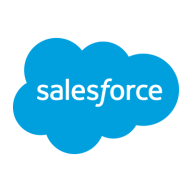

IBM DataPower Gateway and Mule ESB are competing in the integration solutions space, each offering unique strengths. Mule ESB appears to have an edge with superior features and flexibility, enhancing its value for the price.
Features: IBM DataPower Gateway is known for its robust API management, security features, and integration capabilities, making it ideal for secure enterprise environments. Mule ESB stands out with its extensive connectivity options, API-led connectivity approach, and versatile Anypoint Platform, enhancing its ability to meet diverse integration needs.
Room for Improvement: IBM DataPower Gateway could improve with a more user-friendly deployment process and reducing the need for specialized knowledge. Enhanced customization options would benefit users. Mule ESB might enhance its initial cost-effectiveness and streamline licensing options. Better centralized management tools could further simplify user operations.
Ease of Deployment and Customer Service: IBM DataPower Gateway, with its structured deployment model, suits enterprises but requires specialized skills. IBM’s customer service is comprehensive. Mule ESB offers agile, cloud-based deployment solutions, allowing faster implementations. Its customer service excels in providing accessible resources and smoother experiences.
Pricing and ROI: IBM DataPower Gateway offers competitive setup costs with significant ROI in secure, large-scale environments. Mule ESB may involve higher initial expenses but delivers notable long-term ROI, thanks to its flexibility and feature-rich platform.
| Product | Market Share (%) |
|---|---|
| Mule ESB | 17.6% |
| IBM DataPower Gateway | 6.6% |
| Other | 75.8% |


| Company Size | Count |
|---|---|
| Small Business | 11 |
| Midsize Enterprise | 2 |
| Large Enterprise | 16 |
| Company Size | Count |
|---|---|
| Small Business | 23 |
| Midsize Enterprise | 6 |
| Large Enterprise | 36 |
IBM DataPower Gateway is a robust, secure next-generation enterprise-grade single multichannel API gateway that supplies dynamic access, integration, control, and outstanding security. The solution is available in a broad range of workload capabilities, including application programming interface (API), service oriented architecture (SOA), B2B, cloud, web, and mobile. These dynamic capabilities ensure users are able to quickly increase the reach of an organization's critical IT resources to new channels, which will provide shareholders, team members, and clients with safe, secure access at all times.
DataPower Gateway is very flexible and is widely available in virtual, cloud, traditional, physical, Docker, and Linux form factors.
IBM DataPower Gateway Features
IBM DataPower Gateway has many value-added features. Some of these features are included below:
IBM DataPower Gateway Benefits
IBM DataPower Gateway provides many benefits. Some of those benefits include:
Reviews from Real Users
“My company has a good impression of IBM DataPower Gateway. What I like about it is that because it's an appliance, it's a turnkey solution that's very fast and out of the box. Another valuable feature of IBM DataPower Gateway is that it's easy to integrate with other products.”- Bálint T., Solution Manager at Intalion
“You don't have to have a separate DMC proxy because DataPower Gateway is an appliance and will take care of a lot of security features. These include data validations, encryption, as well as XML or any type of scripting or security threats that are present. From a security point of view, being an appliance in the DMC zone, IBM DataPower Gateway will take care of the entire security angle for the infrastructure.” - Sathyan K., Founder/Director at perfTech Solutions Pvt Ltd
We monitor all Enterprise Service Bus (ESB) reviews to prevent fraudulent reviews and keep review quality high. We do not post reviews by company employees or direct competitors. We validate each review for authenticity via cross-reference with LinkedIn, and personal follow-up with the reviewer when necessary.